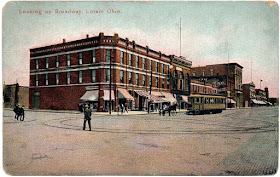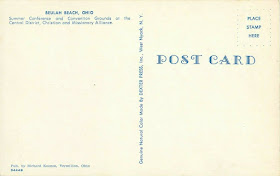Yesterday was the 96th Anniversary of the 1924 Lorain Tornado.
It’s hard to believe that in only four years, a hundred years will have passed since the disaster that still defines the city.
My parents had told my siblings and me about the tornado when we were very young. Knowing that it had killed so many people, and done so much destruction in the city that we lived, caused me to worry every time there was a tornado watch in effect. My parents must have felt the same way, because we went down in the basement a few times when the sky looked particularly threatening.
Anyway, the infamous tornado has been discussed here on the blog many times.
I posted Jack LaVriha’s look back at the tornado from a 1958 perspective
here; a view of the tornado from a 1969 perspective
here; then-and-now photos of tornado-damaged houses and buildings
here,
here,
here,
here,
here,
here and
here; vintage articles and postcards on the occasion of the 90th anniversary back in 2014
here; and actual front pages of the
Lorain Times-Herald and
Chronicle-Telegram here.
Just about the only thing I haven’t posted are front pages of how the tornado was covered in a few major newspapers – so that’s what I’m doing today.
Here’s the story as it appeared on the front page of the
Philadelphia Inquirer of Monday, June 30, 1924.
“Maimed, desperate, bruised almost senseless, Lorain, a city once of some 50,000 souls, is still trying to count its dead tonight,” the lead article notes.
“Lorain is in ruins. By day, workers attempt to clear away the wreckage. At night, the city is in darkness.
“Martial law has been declared and a thousand troops of the Ohio National Guard, Naval Reserves, the extra police from Cleveland, thirty miles to the east, and from Elyria, ten miles to the south, are keeping order.”
Over on the west coast, the
Los Angeles Times took a more regional overview of the storms, including reports of the death toll in Pennsylvania, Iowa and Illinois.
Although the second page headline – “Ghouls Prowl Amid Corpses in City Stunned by Deadly Hurricane” – makes the disaster sound more like a zombie apocalypse, the paper’s coverage is still thorough and impressive.
































































